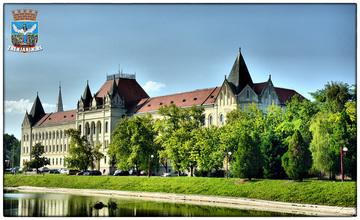History

History of colonization
The data on the population of Zrenjanin in the past are hidden in the documents of various contents, because censuses were not taken in the present-day sense. The available data originate from the Vienna Archives, "History of Petrovgrad" by Felix Milleker, "Monograph of the Torontal District", and from the archives of the local parishes. The first census was conducted soon after withdrawal of the Turks, in 1717, when the town numbered 787 souls. The number of inhabitants, except in short periods of wars and epidemics, constantly grew. In addition to the natural population increase, the population mainly increased by migrations, as a rule after wars in the surrounding regions. The cause of such growth was also quite often influx of the population from the neighboring rural settlements into the town.
After the Turks withdrew, the German population settled in, in large numbers and, in the eighties of the 19th century, Hungarization of the population was pronounced. By the end of 1880, population census was conducted in Torontal District – the region within the Austro-Hungarian Empire, with the seat in Becskerek, according to which it was established that it had 513,861 inhabitants, and the percentage ratio between the nationalities in Becskerek in that period was as follows:
Year Slavs Germans Hungarians Others
1880. 43,2 33,8 19,3 3,7
1890. 38,5 34,9 23,3 2,3
1900. 32,5 30,5 35,5 1,5
Function of the registrar
The registrar function was set up in Zrenjanin on October 1, 1895 when, by the Hungarian law, mandatory civil marriage was instituted in Banat. Up to that time, all the books of births, deaths, engagements, and marriages were kept by the priests for the members of their respective denominations. Up to the liberation in the First World War, in 1918, registers of births, marriages, and deaths were kept in the Hungarian language, and after that in Serbian.
In the year in which the first born was registered in the Register of births, marriages, and deaths, 26,934 inhabitants lived in the town – 9,288 Hungarians, 8,090 Serbs, 8,055 Germans, 423 Slovaks, 281 Romanians, 70 Croats, and 727 others. After the First World War, the Hungarians emigrated in large numbers and, after the Second World War, the Germans population left as well. The ratio significantly changed in favor of the Serbian nationality, which population increased due to the natural population increase and settling in from the regions ravaged by the wars. According to the 1931 census, 32,838 inhabitants lived in Veliki-Big Becskerek – 13,708 Yugoslavs (Serbs and Croats), 9,189 Hungarians, 8,164 Germans, and 1,777 others. The number of inhabitants also significantly grew in the town as a consequence of immigration of the rural population. The biggest population increase was marked in the period of 1960-1980, when the town Zrenjanin actually recorded the biggest number of inhabitants in its history – 81,327, according to the 1981 census.
Refugees and displaced persons
In the period of disintegration of SFRY and wars in the territories of Croatia, Bosnia and Herzegovina, and thereafter of Kosovo, in the course of the nineties, this community was faced with the inflow of a considerable number of refugees and displaced persons. According to the 2001 census of refugees and displaced persons, which was conducted by UNHCR in cooperation with the Republic Commissariat for Refugees, a total of 7,196 persons were registered in the municipality of Zrenjanin. According to the place of previous domicile, most of the refugees and displaced persons arrived from the territory of B&H – 3,757, Croatia – 2,274, and Kosovo – 1,265. In the past years, such persons were mostly assimilated, or changed their domicile, so that, according to the data from 2007, 850 refugees and 970 displaced persons resided in the territory of the Town of Zrenjanin.
 Skupstinagrada Zrenjanina
Skupstinagrada Zrenjanina